There are quite a lot of species of Garnet and it can be confusing sometimes, so here’s an article that explains the different types as well as which are most relevant to the world of gems. Incidentally, you would perhaps be interested in knowing that Garnet comes from the Latin word for seed (granatum), thought to be in reference to the seed of the pomegranate, which color the Garnet resembles. Therefore, the Garnet is universally thought of as having a deep red color, although it can have many other shades, among which the principal is green.![]()
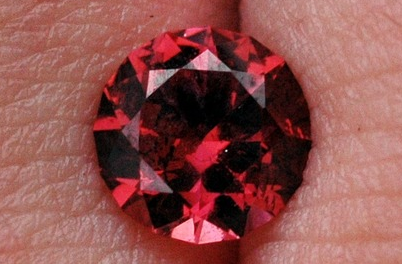
 Garnet varieties
Garnet varieties
There are over 15 species of garnets, but only six are used as precious stones. These are listed here below, somewhat in order of value, the first being Grossular, since Tsavorite belongs to this category and is considered the most valuable variety of Garnet.
- Grossular or Grossularite (includes Tsavorite and Hessonite, also known as Cinnamon-stone).
- Demantoid
- Pyrope
- Spessartine (sometimes spelt Spessartite)
- Almandine (also known as Almandite)
- Uvarovite
The six Garnet gemstones explained
Grossular (Tsavorite and Hessonite)
Can have various colors, of which the most famous is the green (intense to yellowish green) Tsavorite variety, also the most valuable. Another very known sub-type is the cinnamon brown stone called Hessonite (or cinnamon stone). It has an easily distinguishable orangish/yellowish red color reminiscent of Zircon, thus the name. Other main colors include red and yellow. Composed of calcium-aluminum.![]()
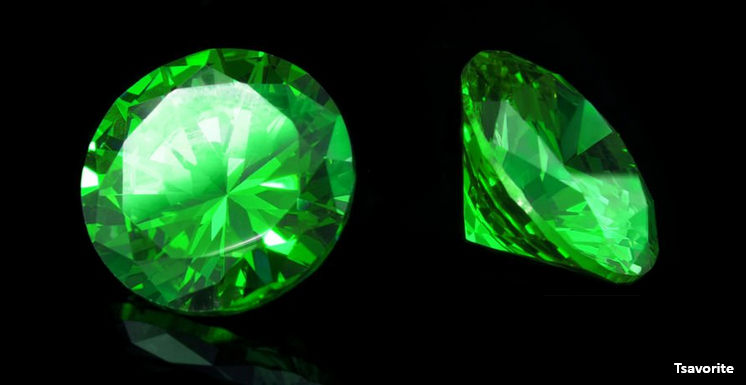
![]() Demantoid
Demantoid
Is the green variety of the Garnet mineral Andradite. The name comes from the old German/Flemish for diamond (demant), due to the extraordinary refractive qualities of the stone. Here it should be mentioned that the black variety of Garnet, called Melanite (melanos = Greek for black), is also of the Andradite family. Composed of calcium and iron. ![]()
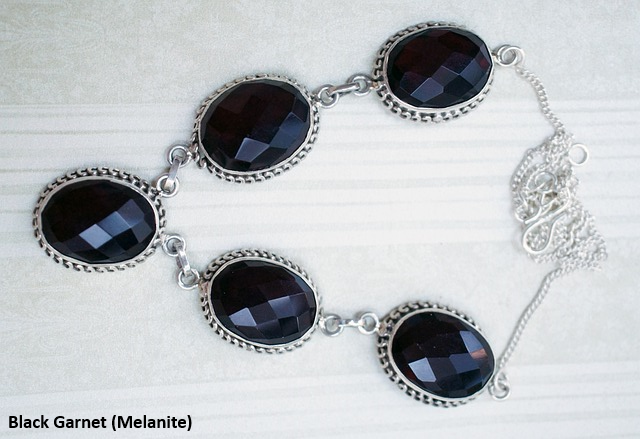
![]() Uvarovite
Uvarovite
A green colored Garnet, in fact the only consistently green variety of the group and the rarest as well. Named after Russian statesman Sergei Uvarov. This variety rarely occurs in crystals which are large enough to cut for jewellery. Composed of calcium and chromium.
Pyrope
An almost always red variety of Garnet (pyro- = Greek for fire), which is rarer than most other Garnet types. Pyrope typically leans toward an orangey red or even light orange as in the example below. Main component is Magnesium (and Aluminum to a lesser extent).
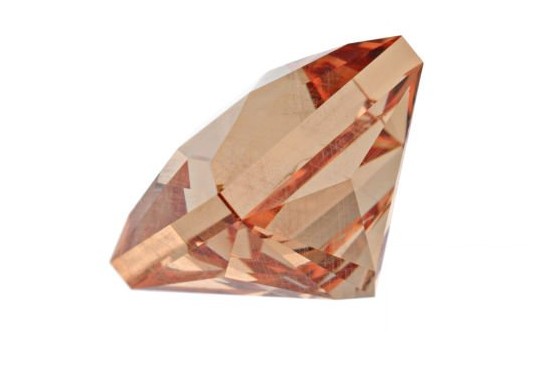
Spessartine/Spessartite
Colors are yellow through red, with intense orange being the most coveted. Takes its name from Spessart, the Bavarian region in Germany where it is believed it was first found. Main component is Manganese (and Aluminum to a lesser extent).![]()
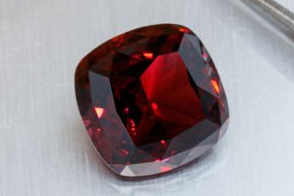
![]() Almandine
Almandine
A deep red colored Garnet, inclining toward purple. Are frequently found in a mixture with Pyrope and/or Spessartite (this combination is referred to as a Pyralspite), in which case it takes on other shades of red. Composed of iron-aluminum.
Other varieties of Garnet
There are a two more Garnet types worth mentioning, these are typically a blend of two or more of the varieties explained above.
Rhodolite
The names derives from the Greek words rhodos (rose or rose-like) and lite (stone). This is a typically pink variety of Garnet, although the color scheme can be pink to red. It is considered a pyrope sub-variety and is a mixture of pyrope and almandine. Rhodolite is more a trade name than an actual classified mineral.
Malaya
Also spelt malaia, it is found in East Africa, where the name is Swahili for prostitute. It is a blend of pyrope, almandine and spessartine, and is quite rare, as it is only found in a region on the border between Tanzania and Kenya. Shades are various types of orange, either reddish, pinkish or yellowish.![]()
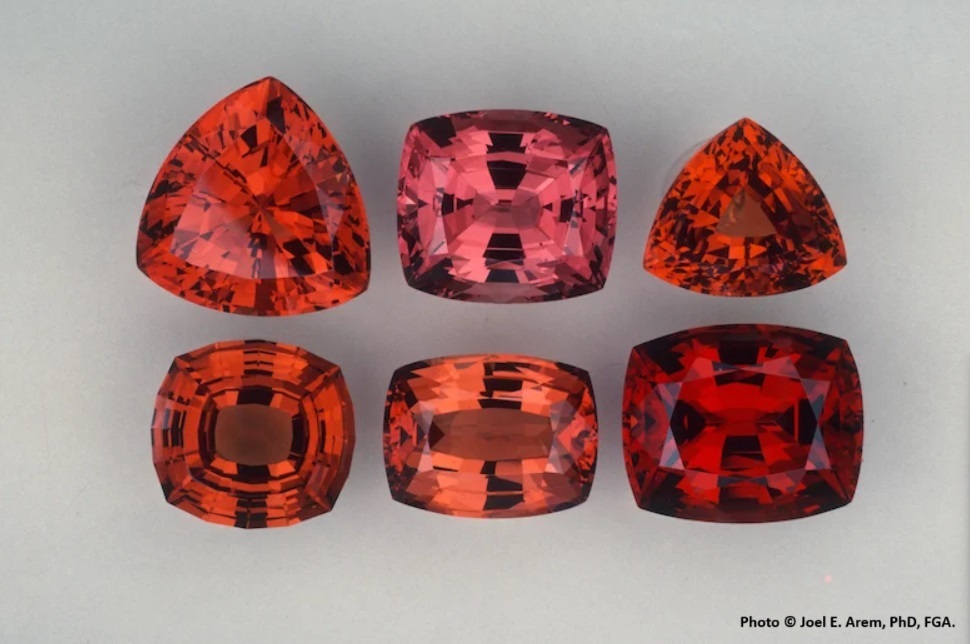
![]()
![]() If you want to now more about the mystique and symbolism of Garnets, click here.
If you want to now more about the mystique and symbolism of Garnets, click here.
